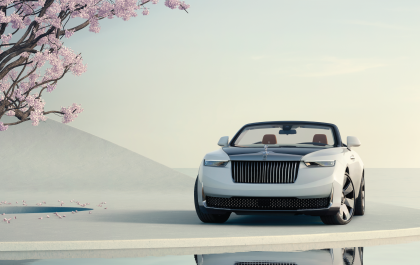By Anubhav Sharma
The Virtus holds triple-digit speeds well and with reassuring stability
Volkswagen makes a bold move by launching the successor to the Vento at a time when the Indian market is dominated by SUVs
A new sedan isn’t how most reviews start these days, but it is heartening to see Volkswagen pick up the mantle of reviving sedans. In a segment heavily dominated by SUVs, including the Taigun from VW, it is a brave move. But,is the bravery backed by a product that can make an impact? We took the latest model from Volkswagen for a drive to see if it delivers on everything that has been promised.

It is no secret that the new Virtus and Škoda Slavia share a lot in common, not just engines and mechanicals. Thankfully, Volkswagen has done enough and more to distinguish the Virtus visually. The wide grille and integrated LED headlamps give the car a clean but bold look up front. At the back, the partially blacked-out tail lights add sportiness while chrome has been used generously throughout to highlight details. The 179mm ground clearance is impressive on the 1.5 GT the contrast roof, blacked-out B-pillars, all-black wheels, and micro spoiler add to the sporty appeal. With all this, the 16-inch wheels look a little small though. On the inside, the familial Volkswagen traits are more visible. The fit and finish are premium, and it is easy to see VW has not skimped on quality. The sporty theme continues inside with red inserts, red stitching, ambient lighting, and graphics in the MID. The perforations on the multi-function steering wheel are a nice touch. I found the seating position a bit high for a sedan, most would like it, but it does mean better visibility while driving.
As expected, there are a ton of features and new tech on the Virtus, seamlessly integrated with the piano black finish is a 10.1-inch touchscreen, unlike other cars where it seems like an afterthought. The Virtus gets wireless Apple Car Play & Android Auto, wireless charging, wireless phone mirroring, ventilated seats, a not-so-big sunroof, eight speakers, a digital cockpit that is customizable, and more. There is the new My Volkswagen Connect app, which lets you access the location of the car, and you can get real-time updates. There is also Kessy, VW’s keyless system, which allows you to start and stop the engine at the push of a button. My grouse was having to choose between the tacho and the speedometer on the digital cockpit.
Safety has always been a strong point at VW, and the Virtus does not disappoint. The 1.5 GT gets six airbags, Electronic Stability Control, Multi-collision brakes, hill-hold, tire pressure monitor, park distance control, three-head rests at the back, and ISOFIX child seat mounts. The rear seat is comfortable with sufficient legroom and thigh support is good. Despite being the widest in the segment, three at the rear will be a stretch but all three passengers get their own headrests and three-point seatbelts. Positioned as an enthusiast’s choice, the Virtus comes with two engine options. A 1.0 litre TSI three-cylinder unit, which makes a decent 115hp and 178Nm, and the larger 1.5 litre TSI, which makes a healthy 150hp and 250Nm. There are three gearboxes to choose from, a six-speed manual, a six-speed torque converter, and a seven-speed DSG twin-clutch. We naturally chose the more powerful 1.5 DSG to drive.
The 1.5 engine is a strong performer, on paper and in real life. As long as you aren’t expecting wheel spins at every traffic signal, the Virtus is actually fun to drive. The performance is strong and steady and the Virtus is always raring to go. The DSG gearbox is not super quick, geared for efficiency I guess, but there are paddle shifters for those quick overtakes. VW claims a higher fuel efficiency on the 1.5 GT thanks to engine stop/start and cylinder deactivation. The software manages all that and unless you glance at the pop-up on the screen, chances are you will not realize it. The high ground clearance means there is some roll, but nothing disappointing. The Virtus holds triple-digit speeds well and with reassuring stability.

All in all, Volkswagen has done almost everything it can to make the Virtus a worthy successor to the Vento. It looks good, feels premium, is comfortable, has all the tech and safety features that a modern car should have, and has competitive pricing that starts at around Rs 11.21 lakh (ex-showroom). Performance and driving pleasure is at the forefront of the Vitrus, which is not something you can say about most cars these days. The car has a lot going for it and if you are in the market for a new vehicle, I would say it deserves a test drive. The biggest reason for me, it is not an SUV.
Reproduced with permission from Mansworldindia.com













